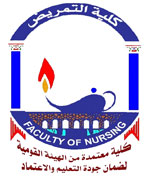Background & Objective(s): Hairdressers are exposed to various health hazards in their work environment. This study aims to assess the working conditions, knowledge, and practices regarding hazardous work exposure, in addition to identifying potential occupational health problems and their associated variables.
Methods: A cross-sectional study including 151 female hairdressers was conducted in Assiut city, Upper Egypt. An interview questionnaire was used to record personal and job characteristics, descriptions of workplace environments, and knowledge and practices regarding occupational health risks and self-reported health problems. Standard assessment of weight and height was performed, and body mass index was calculated.
Results: Insufficient ventilation of salons was reported by 67.5% of the hairdressers, and first aid measures were available for only 15.2%. Low awareness was found regarding blood-borne diseases transmitted through hair salons. Approximately 70% were disinfecting their equipment, and 12.4% performed this after each customer. The most frequent chronic musculoskeletal complaints were low back (22.5%), shoulder (17.2%), and wrist pain (16.6%). Nearly 24% complained from varicose veins. Varicose veins and knee pain were significantly associated with increases in age and working years. Neck pain was significantly associated with increases in age and being employed or owner of
the hairdressing salon. Conclusion: Proper working conditions and safe practices of the studied hairdressers were insufficient. High awareness was found regarding the possibility of disease transmission through hair salons. However, only a few of them identified these diseases and their transmission modes. Moreover, they complained of musculoskeletal pain, varicose veins, and respiratory symptoms. Recommendations: Pre-employment health education programs should be provided for Egyptian hairdressers, and maintenance of hairdressing salons should be checked regularly.
Research Date
Research Department
Research Journal
Journal of high institute of public health
Research Member
Research Publisher
Journal of high institute of public health
Research Rank
National
Research Vol
50(3):
Research Website
Available on line at: www.jhiph.alexu.edu.eg
Research Year
2020
Research_Pages
146-157
Research Abstract

